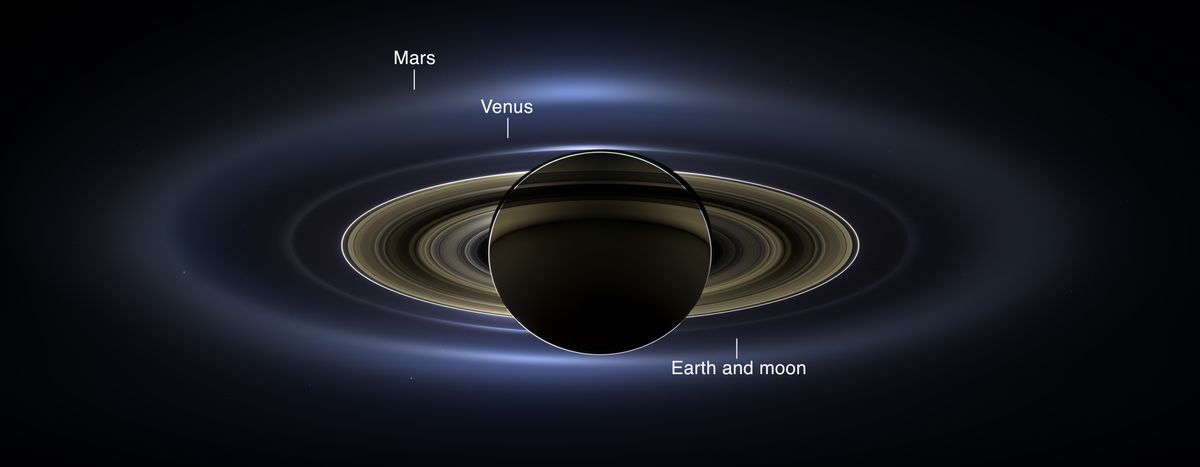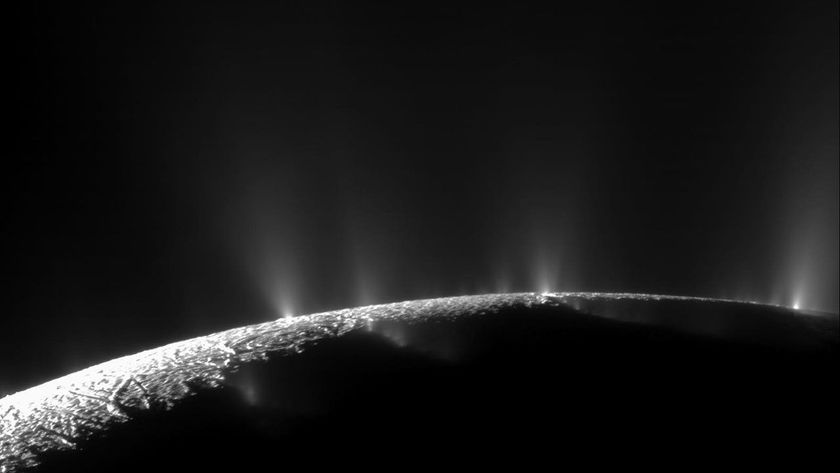Saturn, Earth Shine in Amazing New Photo by NASA Probe

A NASA spacecraft has revealed an unprecedented view of Saturn from space, showing the entire gas giant backlit by the sun with several of its moons and all but one of its rings, as Earth, Venus and Mars all appear as pinpricks light in the background.
The spectacular image, unveiled Tuesday (Nov. 12), is actually a mosaic of 141 wide-angle images from NASA's Cassini spacecraft taken in natural color, which mimics how human eyes might see the ringed planet. Stretching 404,880 miles (651,591 kilometers) across, the panorama captures all of Saturn's rings up to the ethereal E ring, the second outermost one.
The pictures that make up the mosaic were snapped on July 19, 2013 — the same day that Cassini took advantage of a rare opportunity to photograph Earth without interference from the sun, which was totally eclipsed by Saturn at the time. From its far-flung perch millions of miles away, Cassini captured amazing portraits of Earth as a pale blue dot as thousands of people on the ground waved in honor of the global picture day. [Wave at Saturn: Images from NASA's Cosmic Photo Bomb by Cassini Probe]
"In this one magnificent view, Cassini has delivered to us a universe of marvels," Carolyn Porco, who leads Cassini's imaging team at the Space Science Institute in Boulder, Colo., said of the new image in a statement from NASA. "And it did so on a day people all over the world, in unison, smiled in celebration at the sheer joy of being alive on a pale blue dot."
Earth can be spotted as a blue dot to the lower right of Saturn, while Venus shines to the upper left of the gas giant. Mars, visible as a faint red dot, sits above and to the left of Venus.
Beyond inspiring wonder, this new view of Saturn also promises to help scientists study the planet's rings, which are best observed when light shines behind them, Cassini researchers say.
“This mosaic provides a remarkable amount of high-quality data on Saturn's diffuse rings, revealing all sorts of intriguing structures we are currently trying to understand," Matt Hedman, a Cassini participating scientist at the University of Idaho in Moscow, said in a statement.
Sign up for the Live Science daily newsletter now
Get the world’s most fascinating discoveries delivered straight to your inbox.
For example, the photos could shed light on the E-ring, whose icy particles are supplied by geysers erupting from the south pole of Saturn's moon Enceladus. Hedman explained that photos suggest there are disturbances in the E ring from diverse sources, including sunlight and the gravity of Enceladus (which is also one of seven moons visible in the image).
NASA also revealed a new photo collage based on the Saturn mosaic made up of about 1,600 images submitted by the public as part of the Cassini mission's "Wave at Saturn" campaign.
The Cassini mission launched in 1997 and arrived in orbit around Saturn in July 2004. The probe's mission is expected to continue until 2017, after which it will burn up in Saturn's atmosphere.
Follow Megan Gannon on Twitter and Google+. Follow us @SPACEdotcom, Facebook or Google+. Originally published on SPACE.com.













